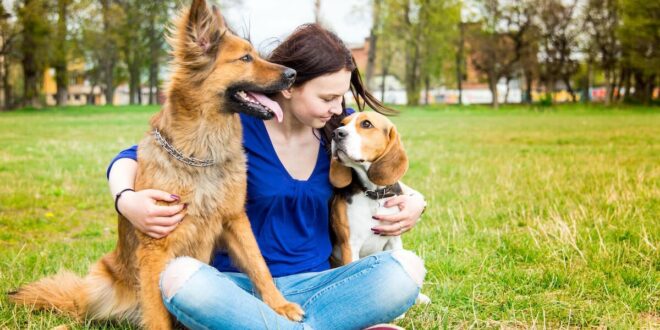Dog owners out there know the joy of having a dog around the house – it can be challenging sometimes, sure, but the rewards far outweigh the costs. Being able to provide a safe, loving home for our fur babies is something of a point of pride for many dog owners. But we also find ourselves thinking, from time to time, whether our dogs get lonely. Of course, we can’t always be around to play with them, because work or family responsibilities can get in the way.
If you’re looking to adopt a new puppy like an adorable Brown Cavoodle, be sure to check out this site. However, keep in mind that bringing home a new puppy when you have an older dog can be a lot of work – possibly more than you would have expected – but there are a lot of benefits as well. They can keep each other entertained, ease severe separation anxiety, and actually improve the health of an older dog in its golden years. Plus, there’s just so much more to love.
But doing this isn’t always a walk in the park. Adult dogs will usually accept younger dogs, but some will make it especially difficult for the newcomer to join their “pack”. What we need to do is to ensure that we set them up for success and make the transition to a two-dog household as easy and as stress-free as possible, for them and for you. You’ll need to balance helping the puppy adjust to their new forever home while reassuring your older dog that they aren’t being replaced or forgotten.
Set your expectations
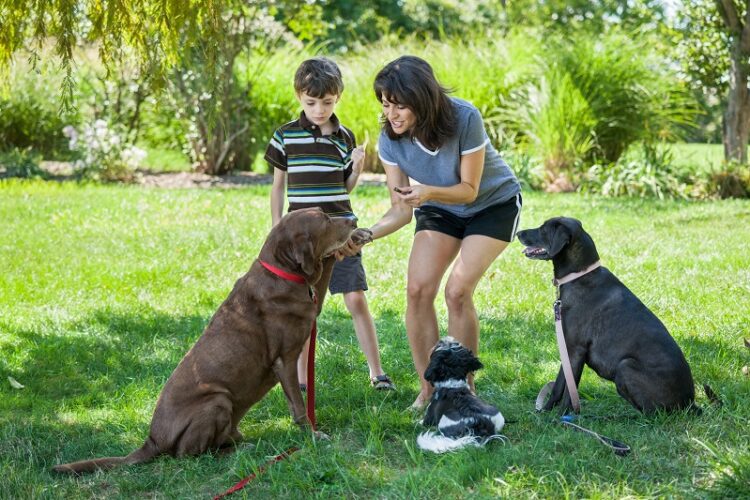
Before anything else, it’s good to set our expectations for how the older dog will treat a new puppy. In our experience, it’s very rare for an older dog to welcome a new puppy addition to the household – but on the other hand, we’ve never seen an older dog hurt a puppy either. Your older dog may whine and grumble and snap at the new puppy, but that doesn’t mean they’re a bad dog. They’re simply reacting to something new and unexpected in an instinctual way. The important thing is to give them time and put in the effort; if you do, we think you’ll eventually get the two to bond into an inseparable pair.
Do some scent prep work
It’s very rare that you’ll pop out for a trip to the store and come back with a puppy. Most puppy adoptions are planned weeks, months, or even years in advance, so you definitely have time to prepare your house and your dog for the new addition. One of the best ways to do this is to get your older dog acclimatized to the scent of the new puppy.
Most reputable dog breeders or adoption centers will allow you to get a piece of cloth or blanket that has been rubbed all over the new puppy. Yes, we know this cloth can be a bit stinky. That’s okay – it’s actually what we want. Giving this cloth to your older dog lets them get used to the smell of the new puppy without any pressure whatsoever, and will make the new puppy’s presence in the future a bit less of a shock.
Supervise their introduction
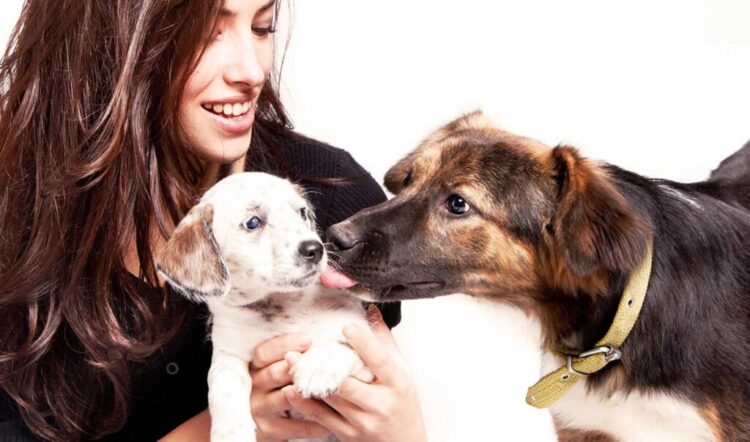
New puppies are still feeling their way around the world and don’t know all the social cues and rules of interaction that adult dogs have. So for the first meeting between the dogs, you absolutely need to be watching and observing how they behave. Like we mentioned earlier, your older dog may whine and grumble and snap at the new puppy – all cues for another dog to back off – but your puppy doesn’t know these cues. A particularly persistent pup may continue to irritate and annoy the older dog, spoiling their first meeting.
We shouldn’t expect the older dog to just accept all the things that a new puppy may do to it. We’ve seen puppies bite at older dogs’ mouths, swat at their faces, and bark right in their ears. If it was you, you’d definitely be annoyed!
It’s our job to separate the two dogs and give both of them a break when their introduction gets too rough or stressful for either of them. Doing this can give them a chance to reset and try interacting again more nicely later on. It also teaches the new puppy that being too rough means they stop getting to play – especially important for dogs like the Border Collie who can be a little aggressive with other dogs.
Use a crate
A new puppy should have their own crate appropriate to their size, and it’ll be important not just for their training but also for introducing them to the older dog. Using their crate as a “howdy crate” can make it much easier for the older dog to tolerate the new puppy’s smell and behaviors. All you have to do is to put the new puppy in the crate in a large, neutral area of the house where the older dog can have free reign to smell and watch the new puppy. This is a technique used by zookeepers when introducing a new animal into an exhibit, and since it works for the pros, it works for us as well.
Give them safe spaces
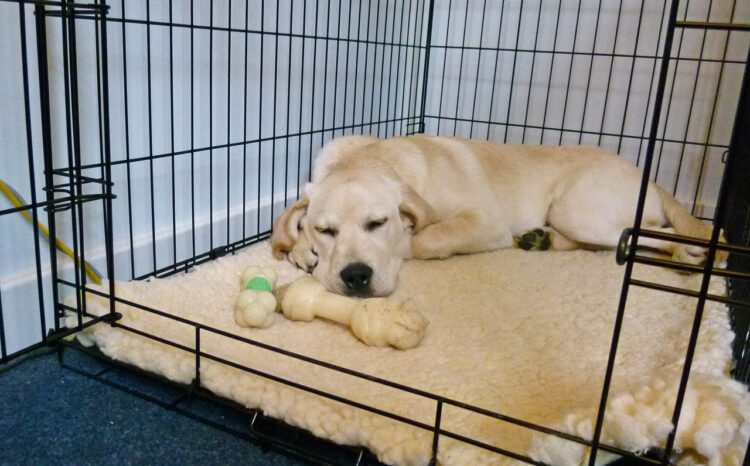
This tip goes for both the older dog and the new puppy. Your dogs should always have somewhere they can go to be away from everyone else – including the other dog. This is usually their own crate, so it’s easy to close the gate and give them privacy. Having this kind of safe space is important for your dog’s mental and emotional health. What’s equally important is that the way to this safe space is never obstructed – you don’t want the dog’s crate to have to be brought down off a shelf or out of a closet.
Make the experience fun
This is going to be the way you help your dogs bond. There are tons of joint exercises and games for dogs to play, as well as training exercises that you can do with both of them. Doing this keeps both dogs active while distracting them from each other enough that the new puppy won’t antagonize the older dog. Win-win!
If you’ve already trained your older dog, you can run through their routine of tricks while a second person can work with the puppy on basic training. Do this in a shared space so that they get used to being around each other. Every couple of minutes, let them interact with each other a bit so they associate training time and treats with being around each other peacefully. The only thing to really watch out for is any food aggression if you’re giving out treats – one behavior you’ll want to nip in the bud.
We like to cap off these shared training sessions with big, fun playtime for everyone – let them expend all their energy and reward them for being good dogs! That way they’ll continue to look forward to spending time together.
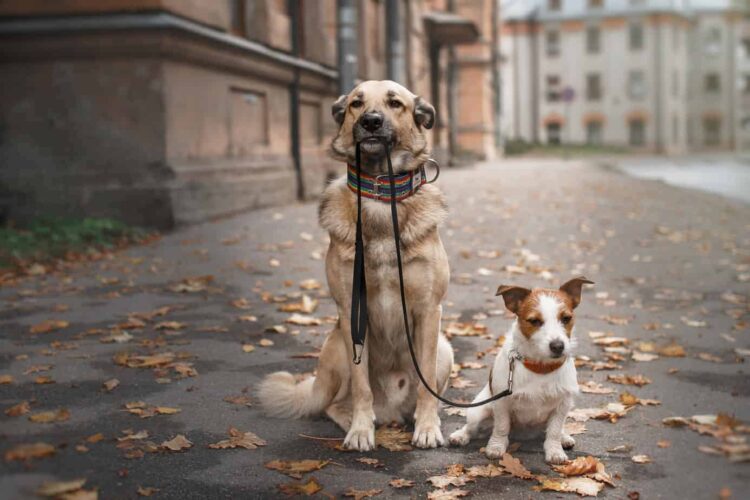
Final thoughts
We think that if you follow these guidelines, you’ll soon have two inseparable fur babies. Even if you encounter difficulties, don’t give up – both dogs can learn to accept one another and coexist, as they’re surprisingly adaptable animals. All they need is for you to put in the effort and time to make it happen.
 Hi Boox Popular Magazine 2024
Hi Boox Popular Magazine 2024
